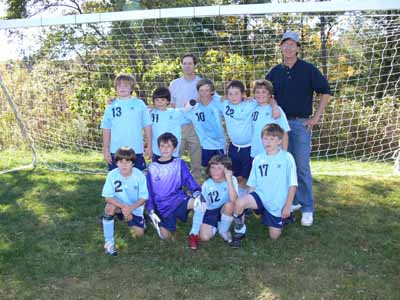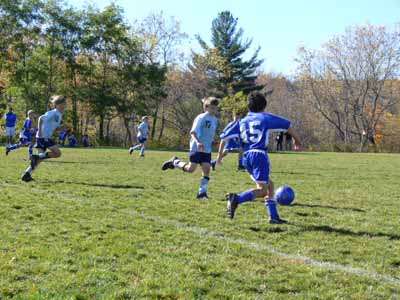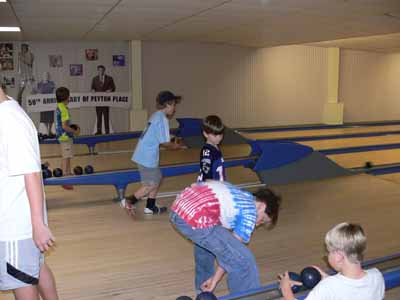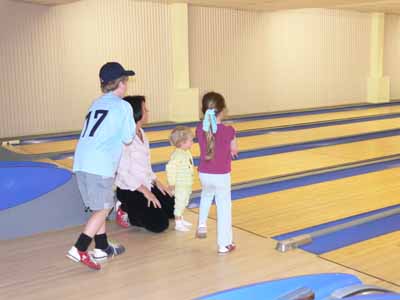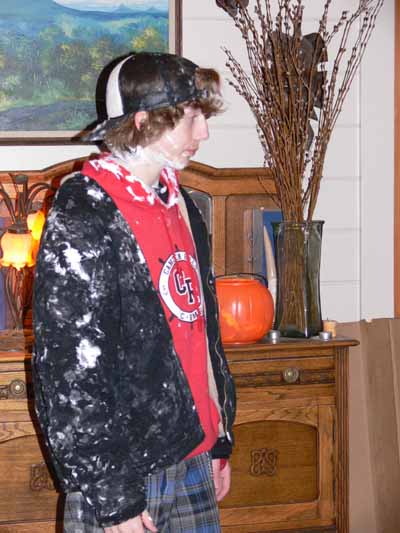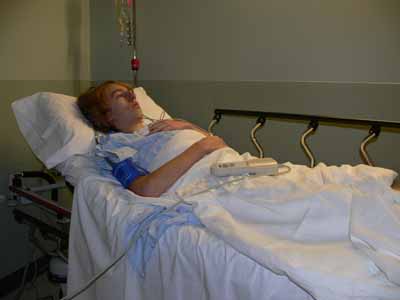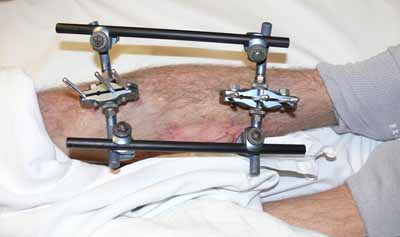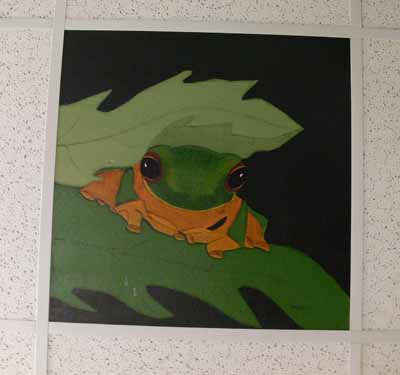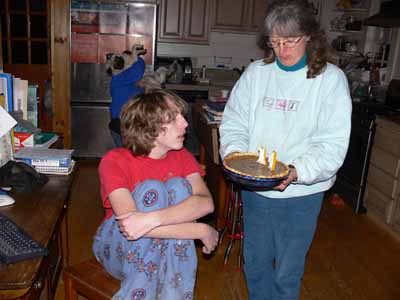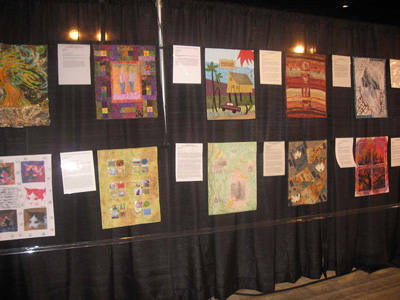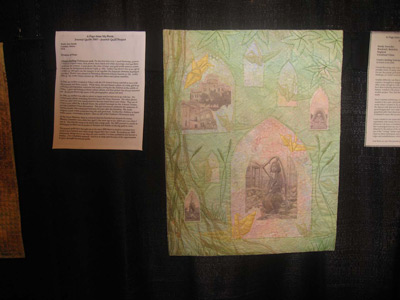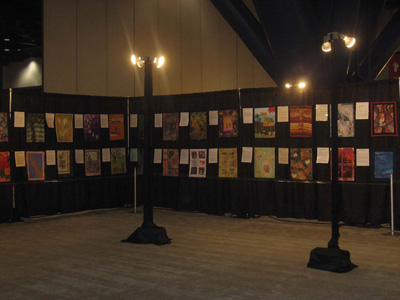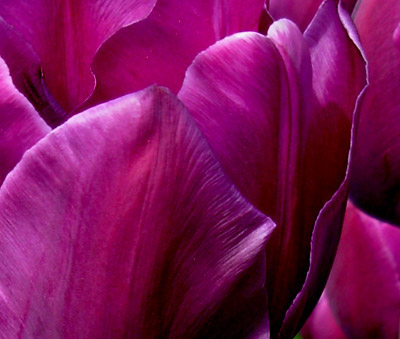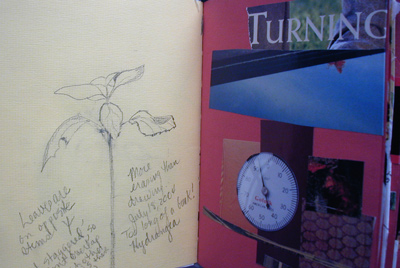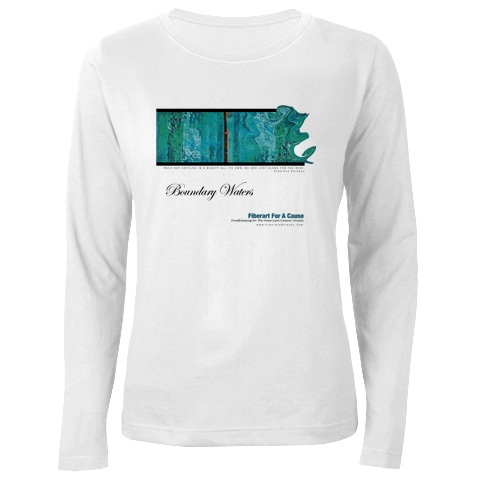In the grand tradition of saving the best for last, here are pictures from our final day when we got to share our work. Some of these pieces (not mine alas) easily qualify as art cloth; others, like mine, will wend their way into art quilts.
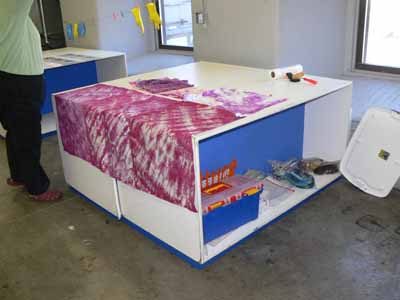
On days three and four, we did an exercise with four (or more) pieces of cloth. In all four cases, we used the same dye mixture–in my case a plum-magenta-ish color. Your color needed to be one that used at least a tiny bit of each of three primaries in a color family (i.e. you had yellow, red and blue in the dye-mix). The first piece of cloth in this sequence was dyed with the complete mix of the color. First you needed to manipulate your fabric (I pleated mine simply by making tucks along the bias), then coil it up in a plastic container, then apply the dye.
For the second piece in the series, you selected a highlight color. You then applied the highlight to the cloth first, let it set a spell and then add dye activator, then add the final color(s). The next two manipulations were similar, with the fourth one using the color’s complement as the “highlight.” The photo above is of my four pieces. I also dyed two scraps of silk and a scrap of cotton using the poured off, activated dye from the various sequences. As expected, the color was pale to non-existent compared to the main samples. Here’s a closer view–the silks may be two of the ugliest pieces of cloth I’ve made in a long time, but there is always over-dye and paint!
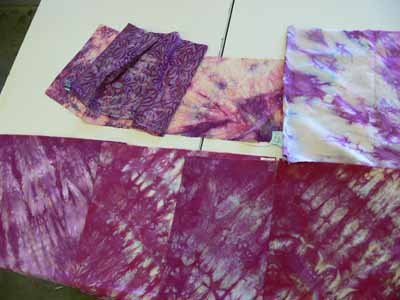
Now that I know what Carol was after, I know I would choose my starting color differently, and it would be a LOT more like what Wil Opio Oguta and my table-make Lasha (from Denmark) did. Here is Wil’s sequence…heavenly!
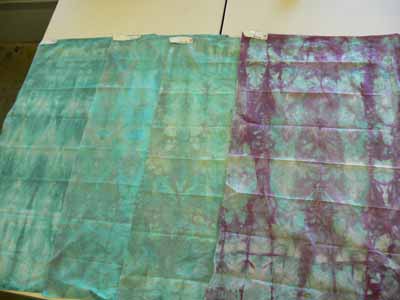
And Wil holding up one of the pieces…luminescent!
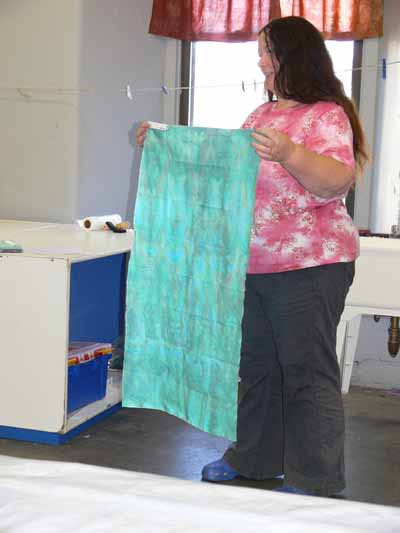
Lasha dyed a large piece of lightweight china silk in addition to her cotton pieces; it is remarkable that the piece went home with her… I was sure it wanted to come home with me!
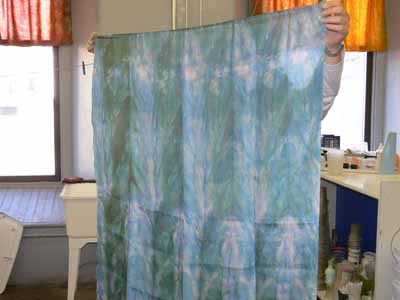
And here is Lasha’s sequence:
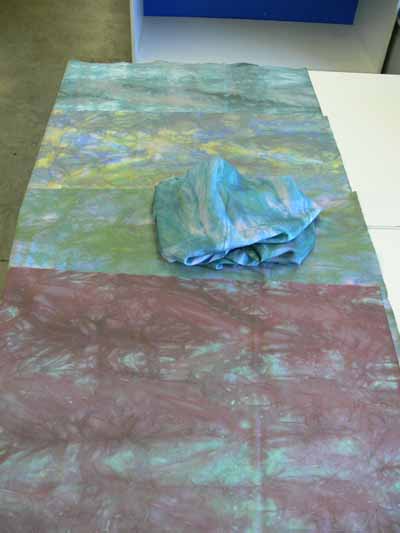
And finally, a close-up (can you tell I love the fracturing that happened?!):
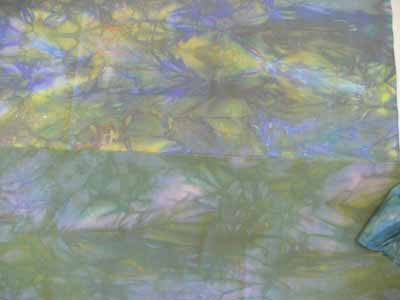
One couple attended, both of whom weave and dye yarn. The same principles used to dye cotton cloth apply to any cellulose fiber, like yarn! Lew used a different colorway and manipulation that gives a very different effect:
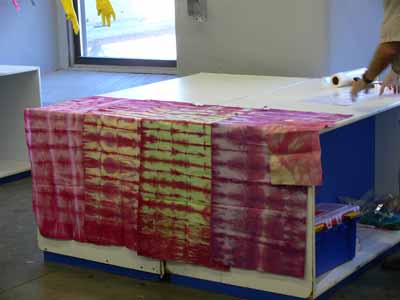
Finally, here is one of Nancy’s pieces. She rolled the cloth from the corner, then twisted, then coiled and ended up with a wonderful wavy rolling texture. The more white area is from what was in the center of the roll. I can see doing this, perhaps on the lengthwise grain, to create a sea texture that shades from light to dark. You could do one round of dyeing to get the waves and coils and shading, then overdye the entire piece with a lighter value of the same (or a related) color to create a real “Seascape” for use in an art quilt. All it takes it time!
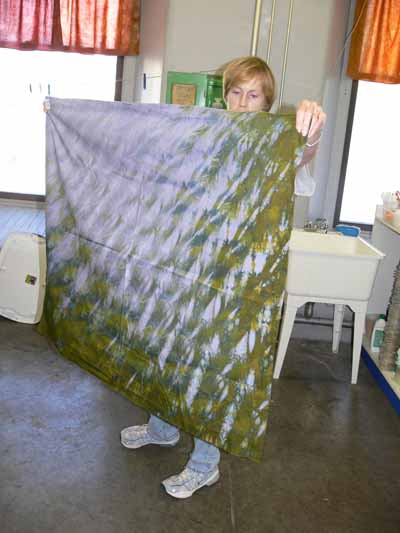
And, alas, I’m not sure whose pieces these are, but I wish they had jumped in my suitcase too!!!! (Update…these are Beth Polvino’s… gorgeous!)
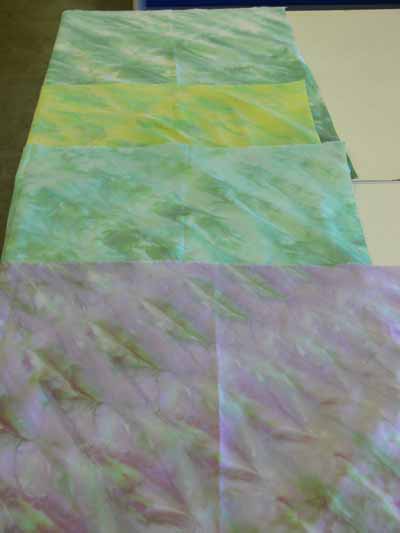
So you wanna go take a class with Carol? It is expensive…class fee, materials, kit fees, transportation, lodging, food, purchases of dyestuffs and auxiliaries you just can’t go home without, but my oh my is it worth it. I’m now trained for years…all I have to do is make time to put it into practice and begin to master the processes!

